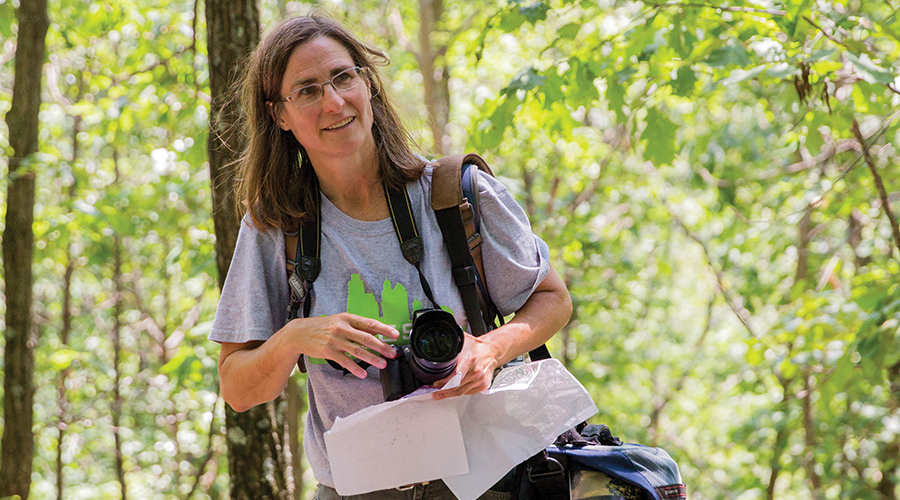
“Experience is the best teacher,” says Sally Willig, an advisor and lecturer in Penn’s Master of Environmental Studies (MES) program. “That’s why I like to get students out in the field, where they can put a lot of course content into the context of the natural environment.” Willig teaches courses, such as Wetlands and Regional Field Ecology, that are designed to introduce both new and experienced environmental studies students to the varied ecosystems in Philadelphia and the surrounding regions, from freshwater tidal marshes to salt marshes and pine barrens to northern peatlands. “I try to illustrate patterns in the landscape and the processes that give rise to those patterns,” she explains.
Once in the field, Willig continues, “I always start with the geology. It really sets the stage for everything else, in concert with the climate of a region. Geology influences the topography and the character of the soils, which influences what sorts of plants grow in the area, which influences wildlife and how the land is used over time.” In that respect, there’s rich information in the field for students of every degree concentration, from those who study biology and land management to those interested in the complex dynamics of environment and policy on the public or protected land they visit. “Sometimes getting out into the field can prompt inquiry into certain aspects of those environments, which the students might follow up on in their capstone project,” says Willig. “There’s an element of discovery and surprise because they’re living environments and we never know exactly what we’re going to encounter.”
Among the unexpected encounters in 2020: the global pandemic, which meant that the experience of field work in Willig’s courses needed to be adapted to smaller groups as well as virtual access for students quarantining outside of Philadelphia. On the plus side, the temporary shift to an online platform for coursework meant that students could complete their summer and fall coursework from anywhere in the world—and their fieldwork could be completed there too. Some of Willig’s students logged on from Kentucky, Florida, and even China and South Korea, uploading raw video footage to share their exploration of ecologically interesting locations. “The class literally had a global perspective, as students were in other parts of the world and could highlight their local landscapes,” says Willig. “Despite the fact we were scattered, it felt like a close-knit group. The students were very supportive of each other.”
This spring, Willig is teaching a course called Ecology, Management, and Advocacy of Urban Forests and combining some of the course features that have worked best for her during the pandemic year: guest speakers from a range of environmental careers, small research projects, and plenty of opportunities for students to get out in the field wherever they are. In past years, the closest field site for this course was the University of Pennsylvania itself: the West Philadelphia campus is an urban arboretum with around 6,500 trees in its collection. This year, students can choose another urban forest to profile, which means exploring and sharing data on a different confluence of geology, climate, soil, and human interactions. “Students love to share information with one another,” says Willig. “The real strength of our program is the students.”
Though Willig looks forward to returning to the campus classroom environment and resuming courses such as Field Study of Puerto Rico's Ecology, which centers around a week-long trip to study the island in person, she appreciates the flexibility of a program accustomed to changing with the tides. “It is a dynamic program that adapts to the changing environmental issues and the changing job market for students,” says Willig. “I feel really fortunate to be involved with the MES program all these years. It’s been a tremendous privilege.”





